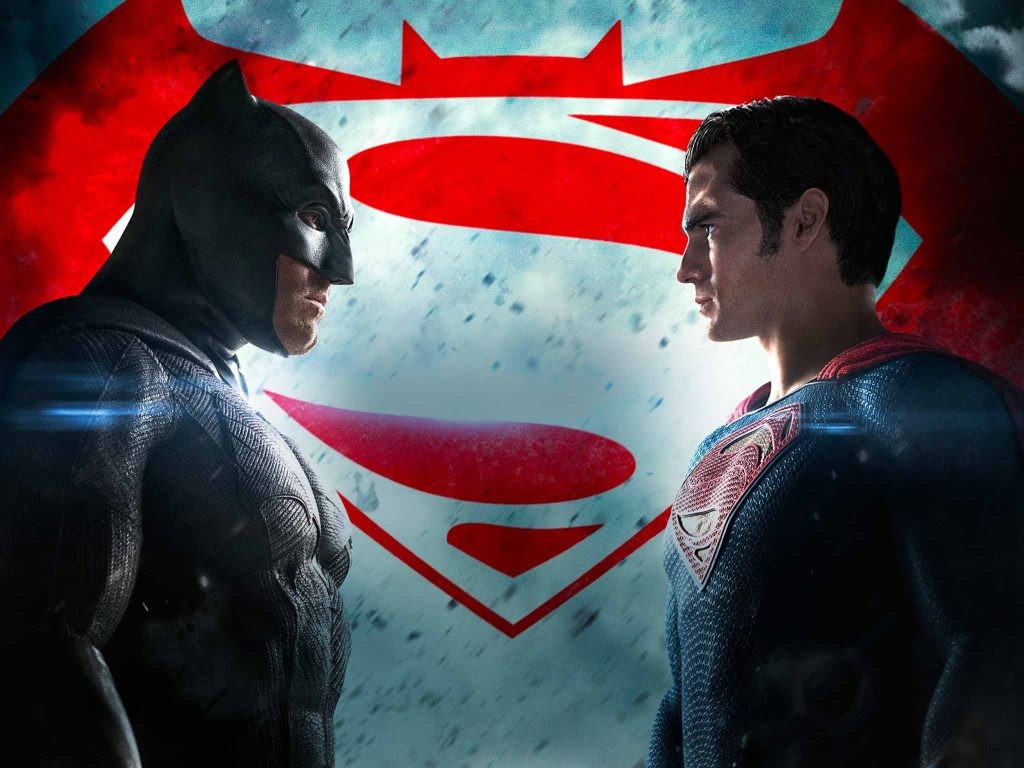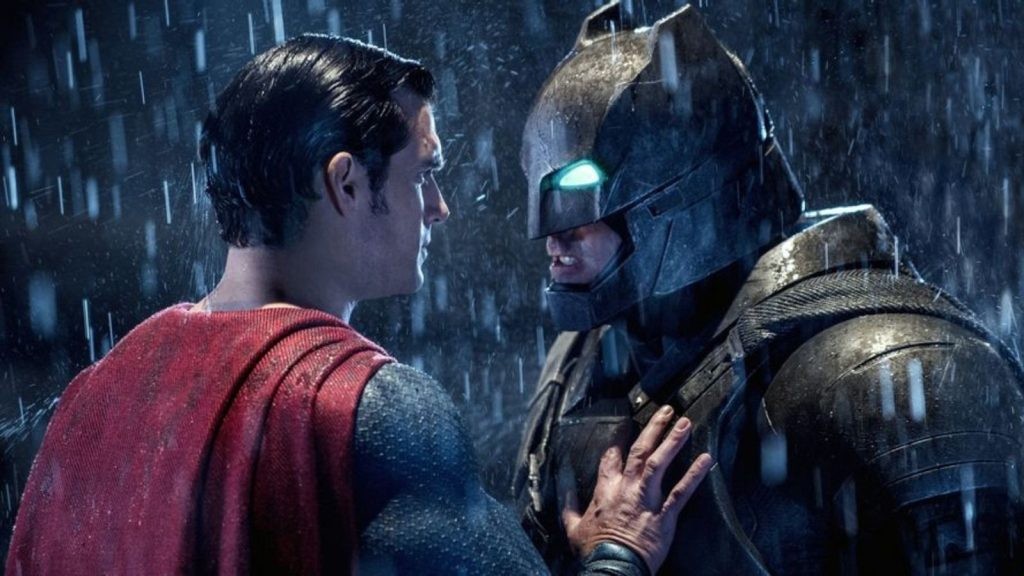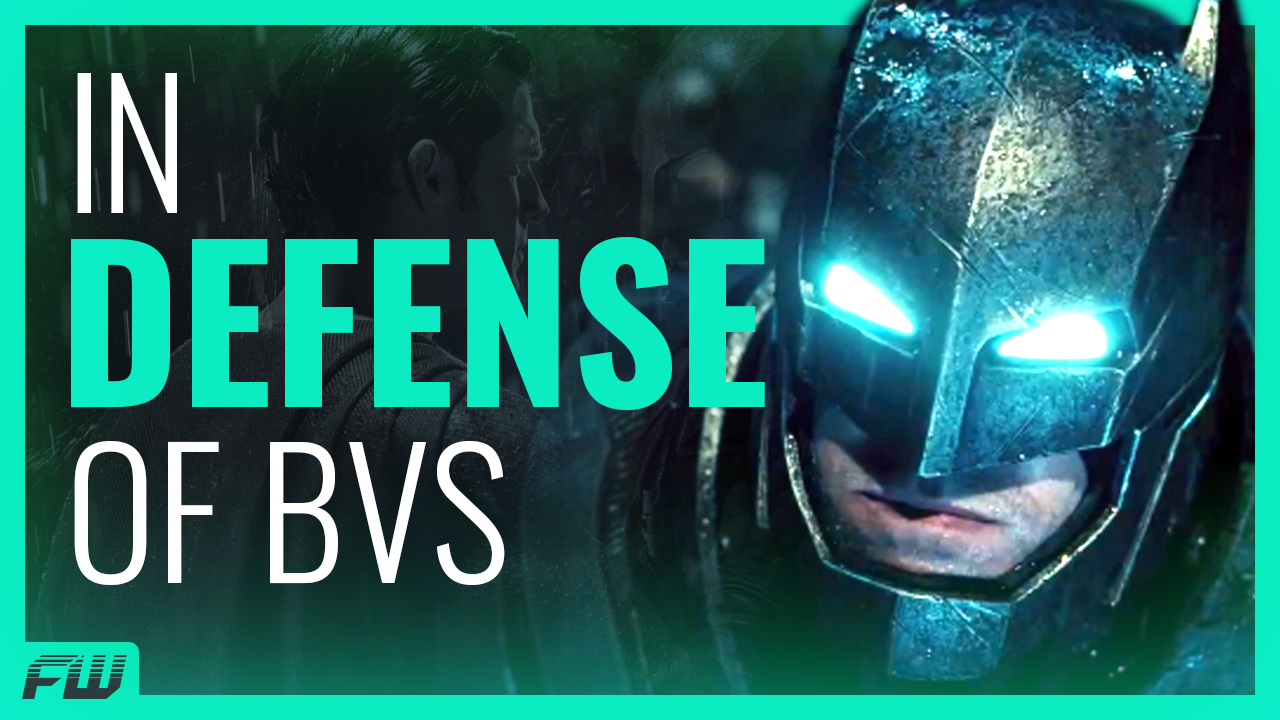In this FandomWire Video Essay, we explore why Batman v Superman Ultimate Edition is better than you remember.
Check out the video below:
Subscribe & hit the Notification Bell so you never miss a video!
Is Batman v Superman Better Than You Remember?

In all the talk of the demise of the DC Extended Universe, some people wonder where its failures began. Many point their finger at 2017’s Justice League, which rushed the film into its cinematic universe phase far too early. But others say it goes back to the second film in the universe, Batman v Superman: Dawn of Justice.
And it’s easy to see why. The movie sits at an unhealthy 29% critics score on Rotten Tomatoes and a barely-positive 63% audience score. However, it’s important to remember that most of these reviews are for the clearly inferior theatrical edit of the film and that version feels stunningly incomplete — as if it was stripped down to just be the action sequences.
But… especially with regards to the longer, R-rated Ultimate Edition, you have to wonder if Batman v Superman: Dawn of Justice is really as bad as we remember. In retrospect, it’s one of the most ambitious films in Zack Snyder’s filmography and there is much more about the film that works than doesn’t.
Like so many projects in the DC Extended Universe, the production of Batman v Superman: Dawn of Justice was fraught with troubles. The studio cited the complex and ambitious “vision” of the film as the cause of its many delays, but that was only the start of its problems. Its marketing budget ballooned out of control, which in turn meant its box office performance had an uphill battle to make a profit.
It seems the main reason the Ultimate Edition of Batman v Superman: Dawn of Justice was released was because of the success of a certain R-rated superhero movie called Deadpool. In February 2016, Deadpool was a massive hit, making $363 million in the United States and $782 million worldwide and that success opened the door to a wider world of adult-oriented comic book movies. Sure, Deadpool was far from the first, with 1998’s Blade being the most prominent example. But studios were still weary to take that chance again. Soon after Deadpool proved there was a still a market for R-Rated superhero fair, it was announced that the home media release of Batman v. Superman would be accompanied by the R-rated extended cut.

You might wonder if it really needed an R-rated version, but the answer is more complicated than you would think. The Ultimate Edition actually doesn’t add much in terms of “R-rated” content. There are a few more splatters of blood here and there, but for the most part, much worse has skirted by in PG-13 films. It seems the R rating was only instituted for the sake of giving the film a more “edgy” appearance.
That being said, the extended cut of the film is absolutely necessary, as it adds some important context to the film. Fans who saw the movie in theaters complained it didn’t make sense — and that’s because so much of the connective tissue is stripped away, leaving only the bare minimum in terms of context, with a greater focus on the action.
In the Ultimate Edition, these pieces of context are reinstated, making the film more cohesive and whole. You might not think that small bits of dialogue make that much of an impact, but in the case of Batman v Superman, it’s the difference between what’s arguably a terrible movie and an amazing one. These scenes added up to a whopping thirty-one minutes of runtime, but they are so valuable in making the story play out logically.
One of the most obvious examples of context being added in the Ultimate Edition is the sequence near the opening of the film, in which Superman rescues Amy Adams’s Lois Lane from a military compound in Africa. In the theatrical cut, this plays out like a random action set piece. But in the Ultimate Edition, it becomes clear that this is a much more sinister part of mastermind Lex Luthor’s scheme to frame Superman for the havoc he wreaks everywhere he goes.
As a whole, the Ultimate Edition does a much better job of illustrating the villainy of Jesse Eisenberg’s Lex Luthor, which is a pivotal component to the plot. Although Eisenberg’s deliriously deranged performance was always a highlight of the film, the Ultimate Edition gives the character much more room to breathe. The true level of Luthor’s villainy in the new edit makes for a far more intimidating antagonist, rather than an askew version of Bill Gates — as he often came across in the theatrical version.
Shockingly little of the content added to the Ultimate Edition is action, meaning the film can focus much more on character building, another vital element when it comes to understanding the growing tension between Superman and Batman that gives the film its title. The theatrical version of Dawn of Justice cut a lot of this material under the assumption that it wasn’t “exciting” and that viewers would want the movie to cut right to the chase with a flurry of punches and destruction. However, this makes the fundamental mistake of not realizing that these quieter character moments are necessary for the film to get its allegorical and narrative points across which then makes the action highlights, like Batman’s infamous warehouse fight scene, feel earned.

One of the distinguishing factors of Snyder’s approach to Superman — both in Man of Steel and Dawn of Justice — is that the character feels more human-like. The version of Superman that fans are used to seeing, both in the comics and in previous film adaptations, is more saintly and pure. The Kryptonian we see played by Henry Cavill is still, first and foremost, a superhero, but he’s a superhero that makes mistakes. He acts with passion and emotion, as opposed to the pure vision of justice that we might expect. The result was extremely polarizing among fans.
Snyder was certainly planting the seeds of this narrative thread in Man of Steel, as we began to see Superman in a more relatable, empathetic light. Much of this characterization is due to the relationship he has with his adoptive parents, Martha and Jonathan Kent — played by Diane Lane and Kevin Costner. Although these characters have always been part of the hero’s history, and a fundamental part of why the Kryptonian chooses to defend humanity and Earth, Snyder leans into this heavily — to the point of arguing that being raised by humans inherently makes him more human than alien.
This theme is developed even further in Batman v Superman, where Snyder goes all-in on the “god or man” debate. The central conflict of the film revolves around holding Superman accountable for the consequences of his actions, similar to how the Avengers’ ethics are brought into question in Captain America: Civil War, which, ironically, originally shared a release date with Dawn of Justice before the latter decided to move up its release schedule by two months.
As part of this theme, we get a significant use of juxtaposition. We see Superman saving people, but unintentionally causing mass destruction and wreaking havoc in the process. People surround Superman, worshiping him as a godlike figure, while others vandalize statues created in his honor. Dawn of Justice is a film that seeks to subvert expectations by challenging what viewers think they know about these characters and provoking them to look at them through a different lens.
However, some fans complained that the theatrical cut of Batman v Superman almost showed Superman as too morally ambiguous, and that’s a fair argument. Snyder corrects this in the Ultimate Edition by making Superman more heroic in his depiction. Although there are only a few small scenes added, it’s a wonder how much of a difference these brief moments can make in the greater context of the film. The Ultimate Edition shows more scenes of Superman rescuing people, as well as giving more context for his actions. As a result, many viewers will feel less inclined to root against Superman in the eponymous showdown.
On the other side of the spectrum, Batman has to be made out to be a bit less benevolent. In the Ultimate Edition, it is shown that whereas the average Joe tends to be more favorable to Superman, Batman intimidates them. Batman effectively rules by fear, as shown in a scene in which Superman (under the guise of his journalist alter ego, Clark Kent), interviews some of the citizens of Gotham. One resident warns Kent of the intimidating force of the Batman by scratching the vigilante’s logo on a lottery ticket.
Indeed, in the Ultimate Edition, the battle between Batman and Superman is much more equally yoked, with viewers unlikely to root for — or against — either character. Instead, it becomes clear that what we are watching is a duel between two misunderstood heroes with good intentions who have been pitted against each other by the true evil: the criminal mastermind Lex Luthor. It’s a much more challenging, intriguing dynamic — and it was only achieved through the added context of that extra half-hour.
However, those are just the things that work about the film from a narrative sense. It’s hard to deny the effectiveness of some of what Snyder did in the film aesthetically. For example, there’s one dream sequence in the film that depicts Batman fighting in a post-apocalyptic wasteland that feels very reminiscent of Mad Max. It’s a wild, visually ambitious sequence, the likes of which we have not seen in the DC Extended Universe since.
The film also boasts an insanely impressive score thanks to a collaboration between legendary composer Hans Zimmer and musician Junkie XL. It’s the perfect blend of old-school and modern to encapsulate the transitional period we experienced in the DC Extended Universe at the time. Although these were characters we all knew, we were seeing totally new versions of them, and the score reflects that with familiar themes done in a new way.
Batman v Superman: Dawn of Justice also introduces us to some characters that would become major players in the DC Extended Universe down the line. Ben Affleck’s performance as the Caped Crusader is certainly divisive, but it’s also unique within the context of on-screen Batmen. It’s interesting that, since he splits the story with Henry Cavill’s Superman, it doesn’t feel like a standard Batman origin story, even though we see flashbacks of Thomas and Martha Wayne’s demise.
We also get our first glimpse of Gal Gadot as Diana Prince, also known as Wonder Woman. Although Gadot’s performance in the role would be somewhat maligned by her final turn in the role in Wonder Woman 1984, there is no denying the charisma and swagger she radiates in Dawn of Justice.
All in all, it’s pretty clear that Batman v Superman: Dawn of Justice got a much worse rep than it deserved. Although the film’s theatrical edition is admittedly pretty rough, it was redeemed by an extended version — the Ultimate Edition — that filled in the gaps left on the cutting room floor. Many Snyder fans are willing to sing the praises of the Snyder Cut from the rooftops, but they often forget the first time he salvaged a film and turned it into a near-masterpiece.
What do you think? Is the Ultimate Edition of Batman v Superman: Dawn of Justice worth a reappraisal? Or do you think the movie is as bad as everyone remembers? Be sure to let us know in the comments below, and don’t forget to like and subscribe. As always, thanks for watching! Until next time.
Follow us for more entertainment coverage on Facebook, Twitter, Instagram, and YouTube.
Note: If you purchase an independent product featured on our site(s), we may earn a small commission from the retailer. Thank you for your support.

